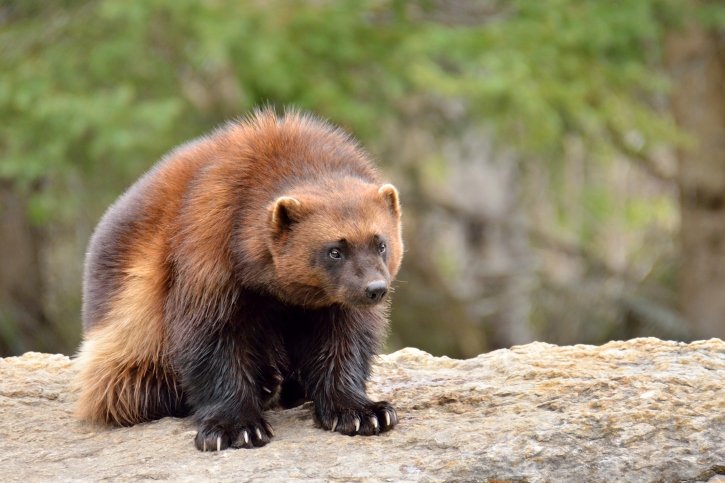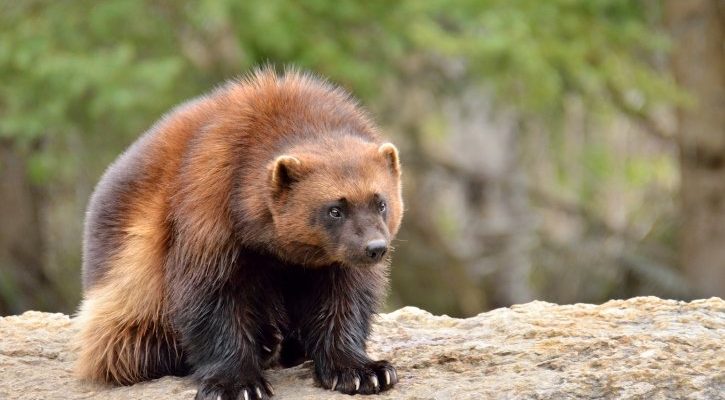
Wolverines, scientifically known as Gulo gulo, are known for their strength, resilience, and often elusive presence in the wild. They thrive in harsh conditions and have unique adaptations that allow them to hunt and survive in some of the coldest climates on Earth. So grab a cup of coffee and join me as we dive into the world of wolverines and uncover ten captivating facts about them!
1. The Mighty Size of a Wolverine
You might be surprised to learn that wolverines aren’t as large as their name suggests. Weighing between 20 to 55 pounds and measuring about 26 to 42 inches in length, they’re more akin to a large dog than a bear. But don’t let their size fool you! Wolverines are incredibly muscular and built for endurance. They’re like the bodybuilders of the animal world, featuring robust limbs and a broad chest that give them an edge in climbing and traversing rugged terrains.
Their compact bodies are specially adapted for survival in cold climates. Wolverines have thick, dense fur that keeps them warm even in frigid temperatures, and their wide, furry feet act like snowshoes, allowing them to move easily through deep snow. This unique combination of strength and adaptability is part of what makes wolverines so fascinating.
2. The Wolverine’s Diet: Nature’s Clean-Up Crew
Here’s the thing: wolverines are not picky eaters. They’re opportunistic feeders, which means they’ll munch on just about anything they can find. Their diet mainly consists of small to medium-sized mammals, including rodents, hares, and even carrion. Imagine a fierce little scavenger that’s not just a hunter but a clean-up artist of the wilderness!
Wolverines have powerful jaws and sharp teeth that allow them to crack open bones. They can feast on carcasses left behind by larger predators, ensuring nothing goes to waste. This scavenging behavior plays a vital role in maintaining the balance of their ecosystem, making them essential to the health of their habitats.
3. Unmatched Strength and Ferocity
If you’ve ever seen a wolverine, you know they carry themselves with a certain swagger—like they own the place. Honestly, part of that bravado is justified. Wolverines are incredibly strong for their size. They can take down prey much larger than themselves and often defend their territory from would-be challengers. It’s not uncommon for them to confront animals like wolves or bears if they feel threatened or protecting their food.
Their fierce reputation is amplified by their vocalizations, which range from growls to whistles. You might think of them as the ultimate underdog, fiercely defending their territory, mixing bravado and cunning in their daily lives.
4. The Mysterious Habitat of the Wolverine
Wolverines are particularly hard to spot in the wild, often roaming vast territories of remote forests and mountains. They thrive in cold, snowy conditions, preferring places where they can dig through the snow in search of food. Picture a wild animal that blends seamlessly into its surroundings, hiding in the shadows, making it a challenge for wildlife enthusiasts to catch a glimpse.
Their home ranges can vary widely depending on the availability of food and mates. In some areas, they might cover 150 square miles or more! This makes tracking them quite a challenge for researchers. With their elusive nature, each sighting of a wolverine is like finding a needle in a haystack—a rare and thrilling experience for those lucky enough to encounter one.
5. Unique Reproductive Behavior
Let me explain something interesting about wolverine reproduction. They are solitary animals, but when mating season rolls around, they come together. Female wolverines usually give birth to two to four kits in a secluded den, often dug into the snow. This hidden location helps protect the young from predators and harsh weather.
The kits are born blind and helpless, relying completely on their mother for warmth and food. As they grow, the mother teaches them essential survival skills. Wolverines show a high level of maternal care, ensuring their young are well-prepared to face the harsh environment once they leave the den.
6. Wolverines and Their Strong Sense of Smell
You might be wondering, what helps wolverines find food in their snowy habitat? One of their key tools is their remarkable sense of smell. Wolverines can sniff out food buried under several feet of snow. Imagine having a superpower that lets you locate a meal hidden beneath winter’s icy grip!
This incredible olfactory ability allows them to find carrion even when it’s long gone from sight. It’s not just about survival; it’s a crucial skill that helps them thrive in their challenging environment. Their keen sense of smell is essential to their role as scavengers, allowing them to locate essential food sources that many other animals might miss.
7. Cultural Significance and Folklore
Wolverines are interesting not just in biology but also in culture. Ancient cultures often viewed them as symbols of strength and resilience. In various indigenous stories, wolverines are depicted as cunning and bold, embodying the spirit of survival. They represent the wild, untamed nature of the world, reminding us of the strength found in even the smallest creatures.
In more recent times, they’ve made appearances in popular culture, often as fierce characters in stories and cartoons. This representation helps ignite curiosity about their real-life behavior and habitats, allowing people to connect with nature and wildlife in a deeper way.
8. The Conservation Status of Wolverines
Unfortunately, wolverines face significant threats due to habitat loss and climate change. As temperatures rise, their snow-covered habitats are shrinking, affecting the availability of food and suitable places to live. Conservation efforts are underway to protect their habitats and ensure these remarkable creatures don’t vanish from our planet.
Organizations are focusing on climate resilience and habitat protection, hoping to safeguard wolverine populations for future generations. Understanding their role in the ecosystem is critical for conservationists and wildlife enthusiasts alike. It’s a reminder of how interconnected we all are in this web of life.
9. Wolverines in Popular Culture
You might be surprised to see wolverines featured in movies, comics, and even video games. Most famously known as the inspiration for the Marvel superhero Wolverine, these creatures have sometimes been misrepresented as just fierce fighters. While the comic character shares the name, the real-life wolverine embodies more than just brute strength; it represents survival and resilience in the face of extremes.
This cultural portrayal highlights our fascination with wild animals and helps spark interest in their real-world counterparts. It encourages people to learn more about the natural world and the importance of preservation.
10. How to Help Wolverines and Their Habitat
Now that you know about these incredible creatures, you might be wondering how you can help. Supporting conservation efforts is a great start. Here are some simple ways to make a difference:
- Advocate for habitat protection: Support policies and organizations dedicated to preserving natural spaces.
- Educate others: Share what you’ve learned about wolverines and their role in the ecosystem.
- Participate in wildlife initiatives: Join local wildlife groups or volunteer for conservation projects.
Every small action counts. By spreading awareness and supporting conservation efforts, you play a part in ensuring that wolverines continue to roam the wild.
In conclusion, wolverines are much more than just ferocious animals—they are resilient survivors that play essential roles in their ecosystems. By understanding their lives and the challenges they face, we can appreciate these fascinating creatures and contribute to their conservation. Let’s keep the spirit of the wolverine alive for many years to come!

